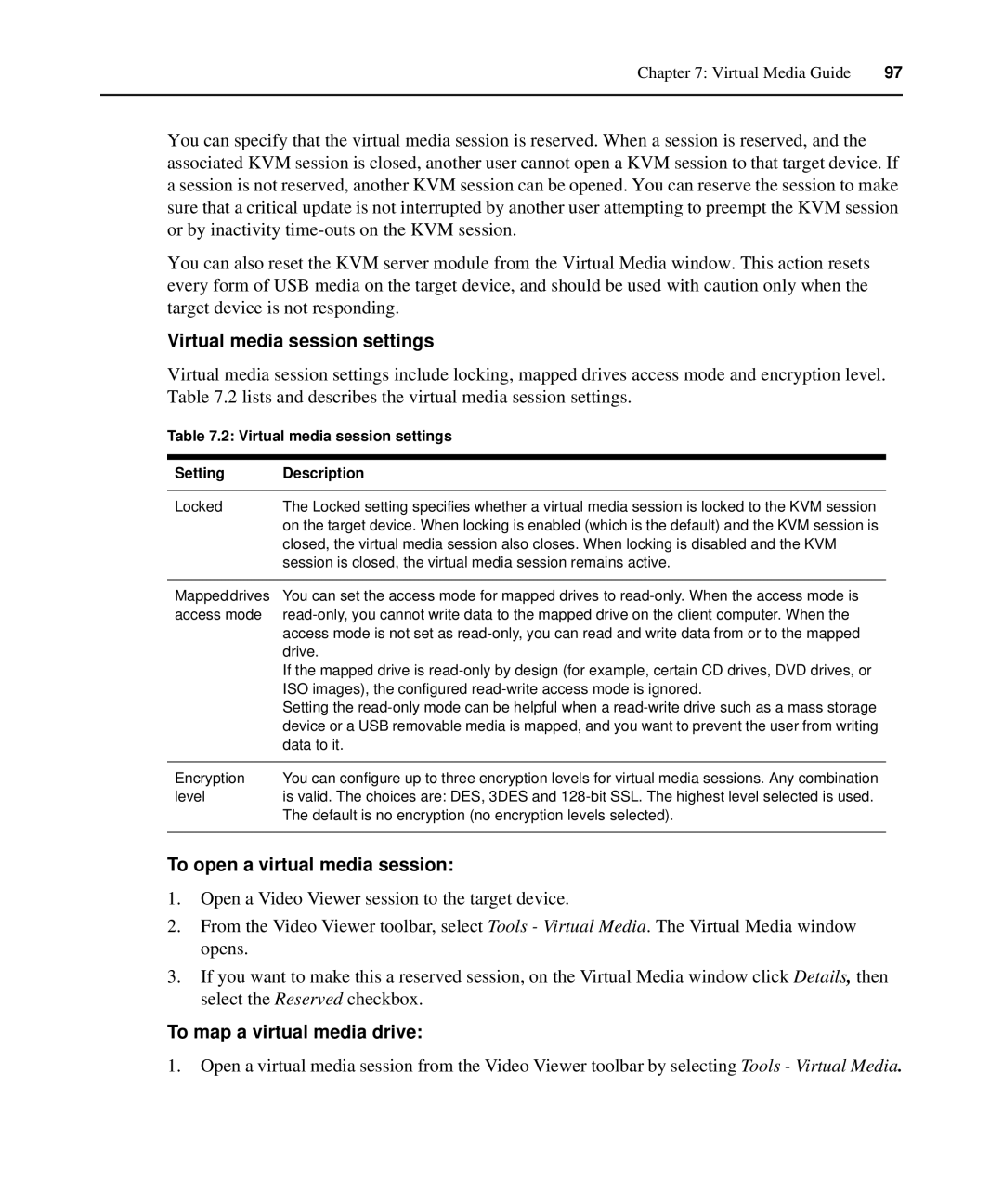Chapter 7: Virtual Media Guide | 97 |
|
|
You can specify that the virtual media session is reserved. When a session is reserved, and the associated KVM session is closed, another user cannot open a KVM session to that target device. If a session is not reserved, another KVM session can be opened. You can reserve the session to make sure that a critical update is not interrupted by another user attempting to preempt the KVM session or by inactivity
You can also reset the KVM server module from the Virtual Media window. This action resets every form of USB media on the target device, and should be used with caution only when the target device is not responding.
Virtual media session settings
Virtual media session settings include locking, mapped drives access mode and encryption level. Table 7.2 lists and describes the virtual media session settings.
Table 7.2: Virtual media session settings
Setting | Description |
|
|
Locked | The Locked setting specifies whether a virtual media session is locked to the KVM session |
| on the target device. When locking is enabled (which is the default) and the KVM session is |
| closed, the virtual media session also closes. When locking is disabled and the KVM |
| session is closed, the virtual media session remains active. |
|
|
Mapped drives | You can set the access mode for mapped drives to |
access mode | |
| access mode is not set as |
| drive. |
| If the mapped drive is |
| ISO images), the configured |
| Setting the |
| device or a USB removable media is mapped, and you want to prevent the user from writing |
| data to it. |
|
|
Encryption | You can configure up to three encryption levels for virtual media sessions. Any combination |
level | is valid. The choices are: DES, 3DES and |
| The default is no encryption (no encryption levels selected). |
|
|
To open a virtual media session:
1.Open a Video Viewer session to the target device.
2.From the Video Viewer toolbar, select Tools - Virtual Media. The Virtual Media window opens.
3.If you want to make this a reserved session, on the Virtual Media window click Details, then select the Reserved checkbox.
To map a virtual media drive:
1.Open a virtual media session from the Video Viewer toolbar by selecting Tools - Virtual Media.
